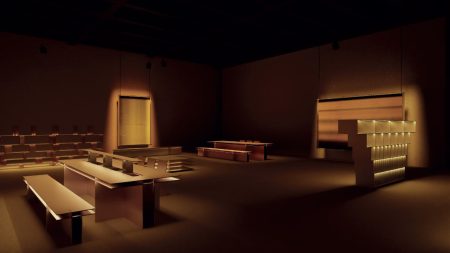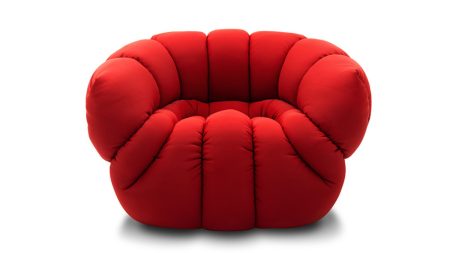Summarize and humanize this content to 2000 words in 6 paragraphs in EnglishAt Spazio Rossana Orlandi, near the church of Sant’Ambrogio – a true landmark of Milan Design Week – German design Studio BUDDE presented DUNE, their latest creation, in collaboration with Nando Studio. This innovative piece redefines the traditional relationship between a rug and a seat, merging comfort and structure into one hybrid object. With this project, BUDDE proposes a new domestic archetype: where softness meets architecture, and where heritage meets experimentation.Studio BUDDE draws from a strong architectural background, reimagining space through objects. Their practice spans furniture, lighting, and interior pieces – balancing collectible one-offs with designs made for broader production.The rug is produced in collaboration with Nando Studio in Cologne – founded by Fernando Colosino – DUNE is tufted using a technique that celebrates imperfection, playfulness, and texture. Nando Studio specializes in bold, unconventional rug designs that emphasize emotional value. Their craftsmanship transforms each piece into a tactile artwork. Here, tufting is a technique and a language – one that speaks of comfort, interaction, and presence.Inspired by the rugs used in nomadic desert cultures, DUNE is more than just furniture – it’s a tactile landscape. Its form mimics the gentle slopes of sand dunes, while its function bridges floor seating with a European model, the chaise-longue. The piece is made from fine merino wool stretched over a sculptural aluminum base, divided into two interconnected sections: one laying flat like a rug, the other gently rising from the floor, forming a soft elevation that embraces the body.The warm, earthy color palette reflects the subtle light changes that occur in desert environments from sunrise to sunset. The organic curves and tonal gradients invite rest and contemplation, turning the object into an oasis within the home.Through this collaboration, BUDDE explores how design can shape behavior. Their architectural background informs a deep interest in how materials and forms can suggest new rituals. From lighting to furniture and decor, their projects often propose minimal, poetic responses to daily life.DUNE is an example of this philosophy. It’s an intuitive, essential object that guides users back to simple, grounding gestures – like lying down, taking time, and reconnecting with the body and the surrounding. It eliminates the superfluous and instead focuses on material honesty and long-lasting quality. Here, function and feeling merge, creating a piece who’s doesn’t just furnish a space but reshapes how we inhabit it.









